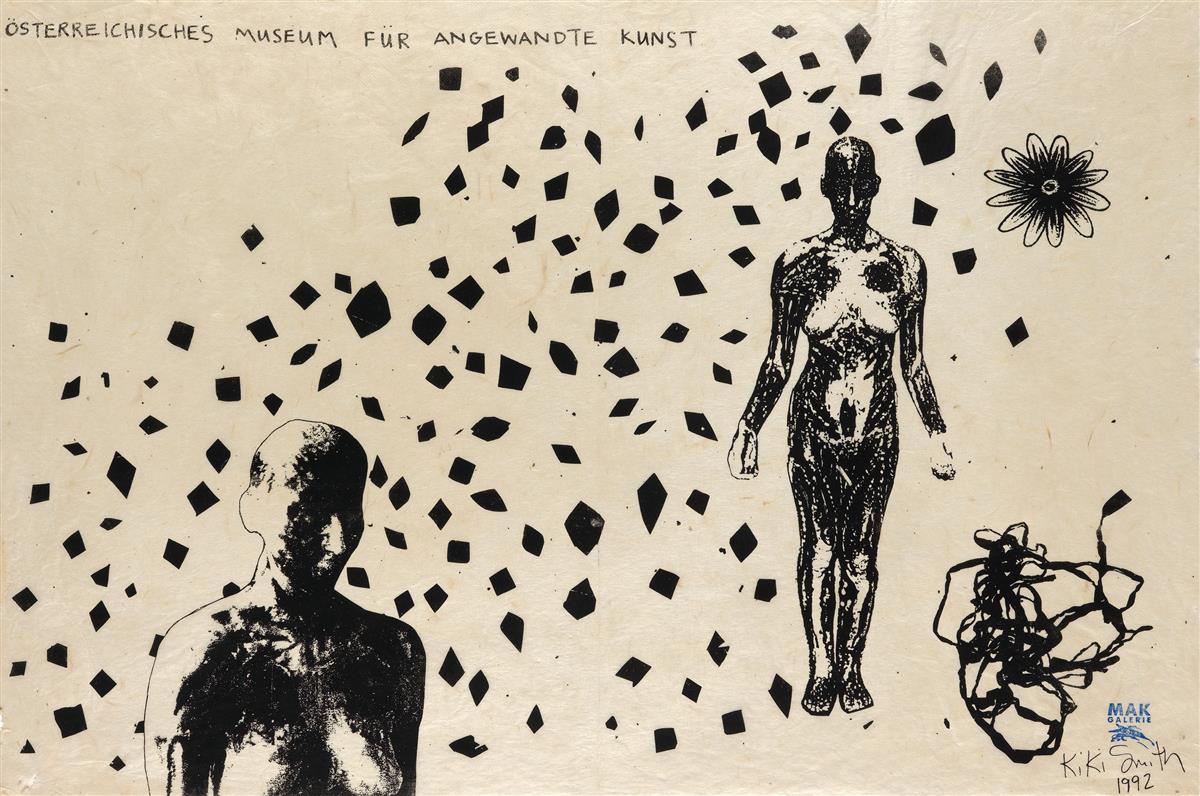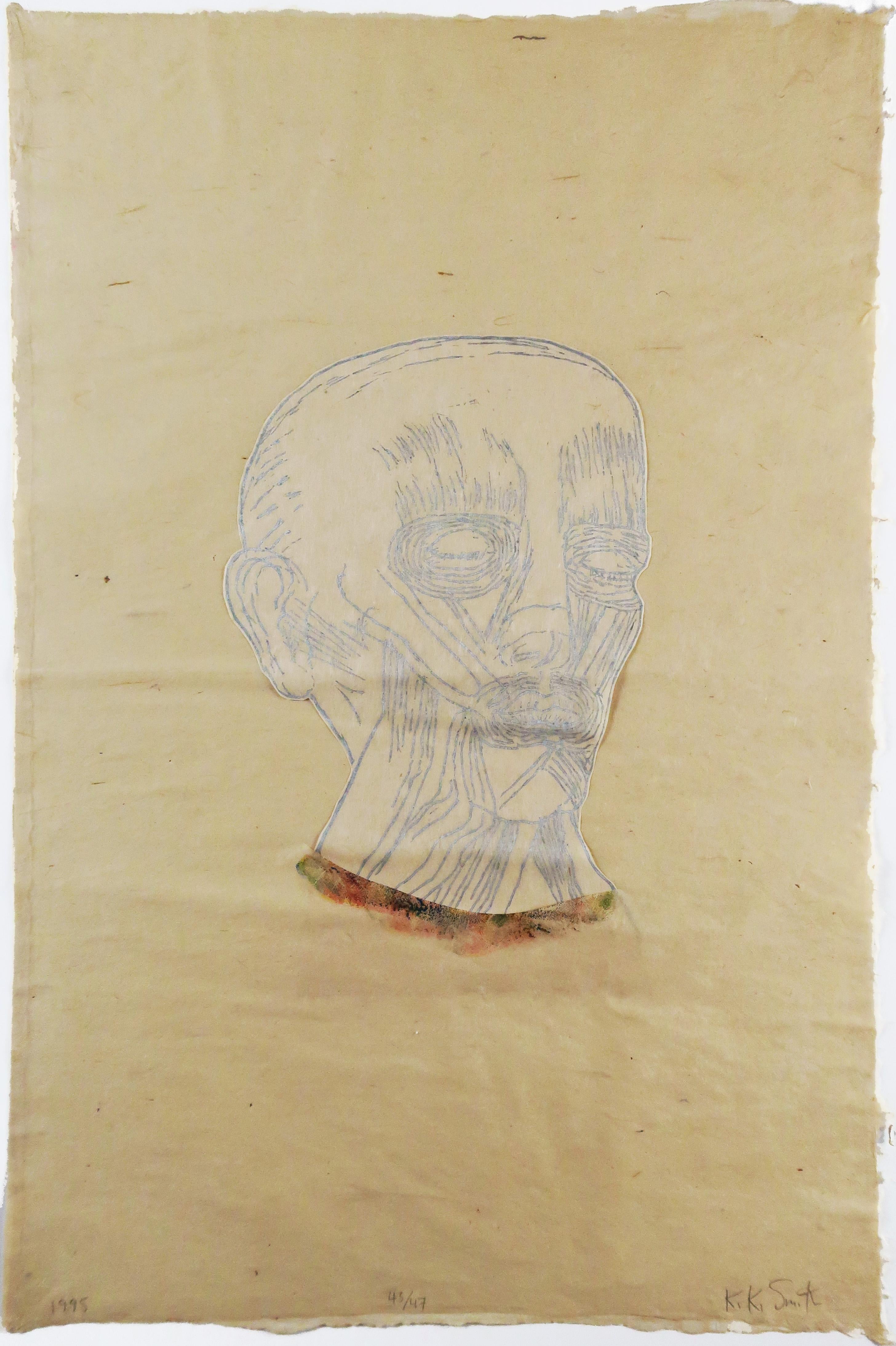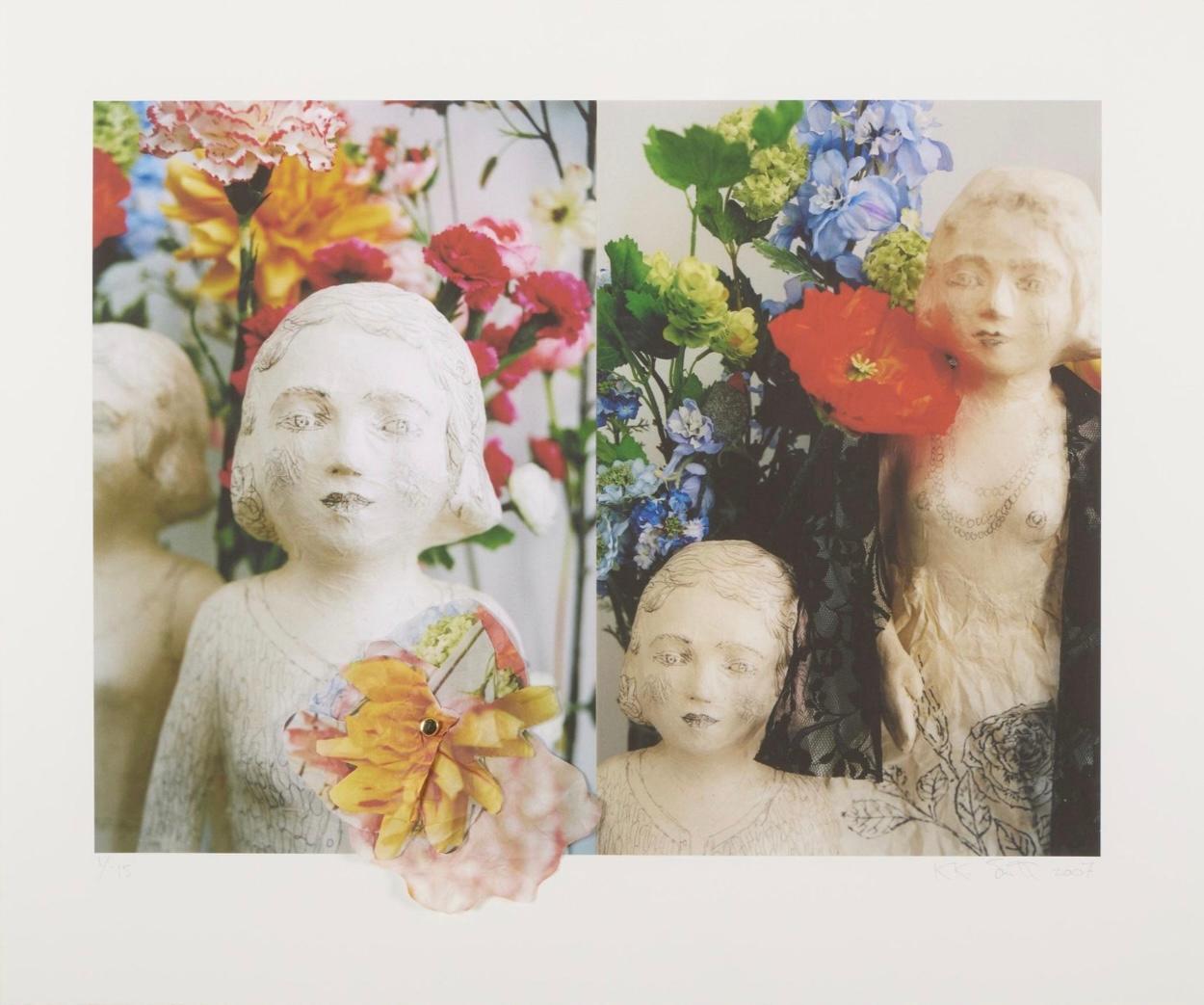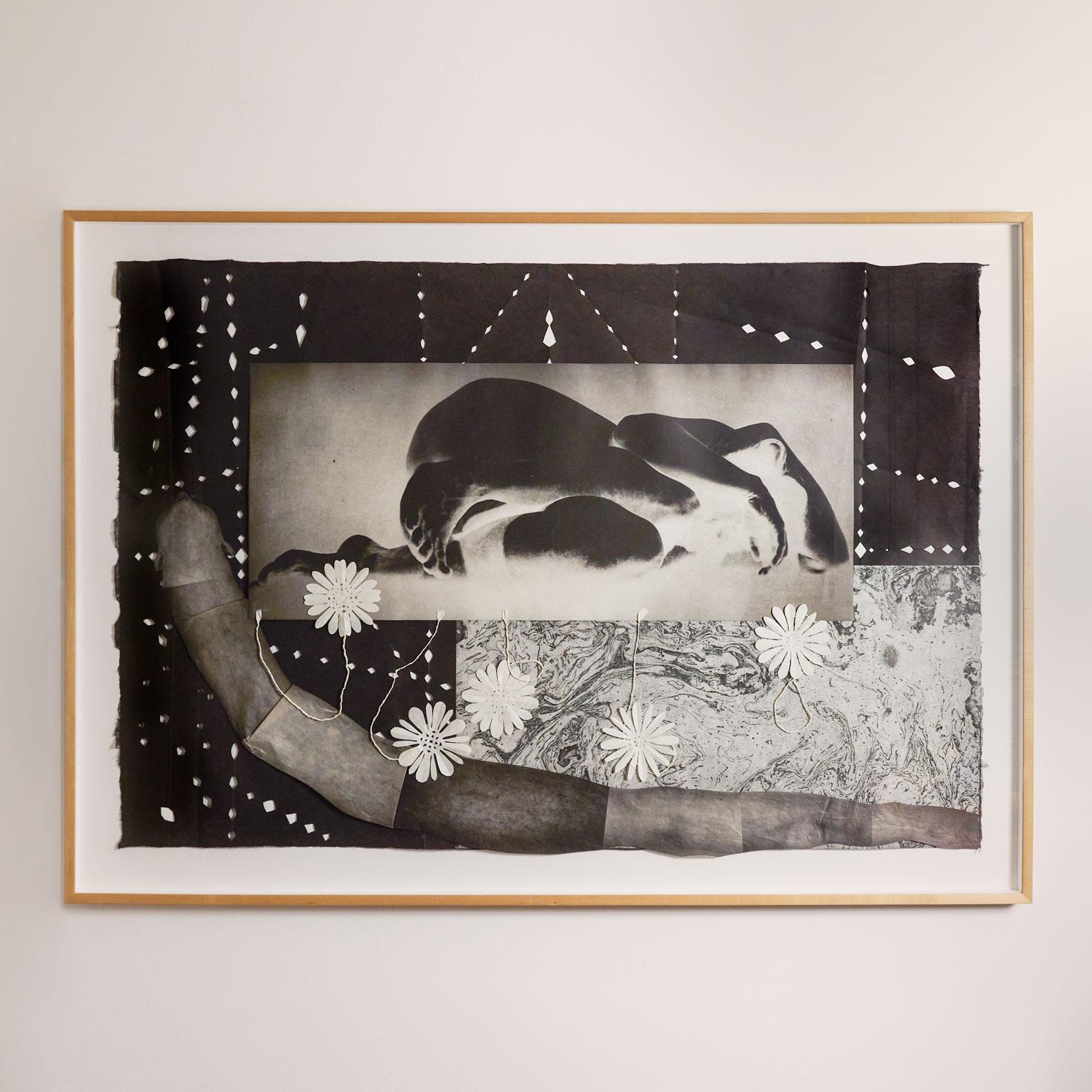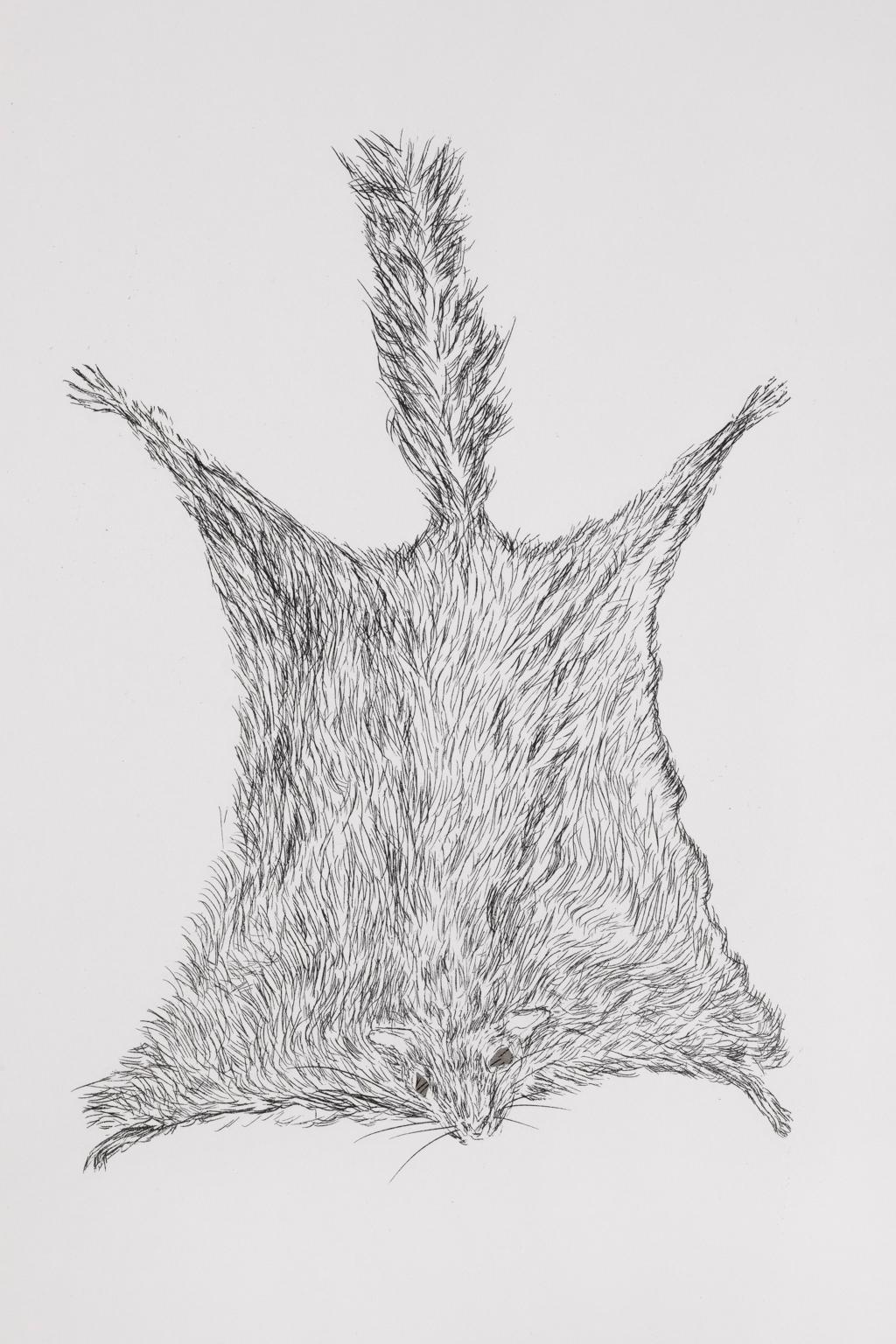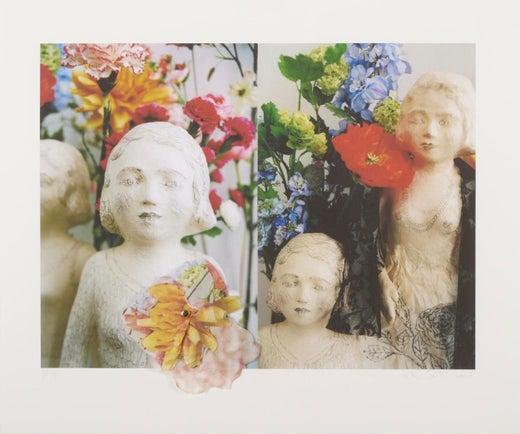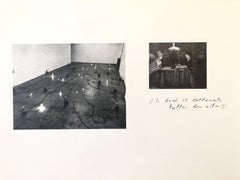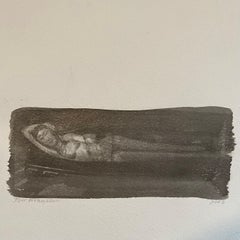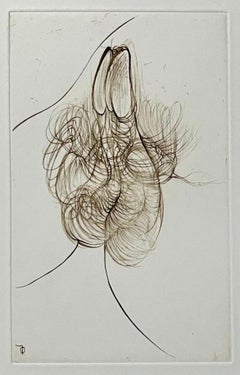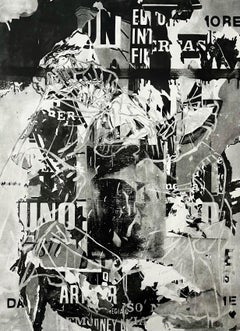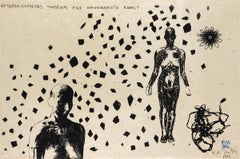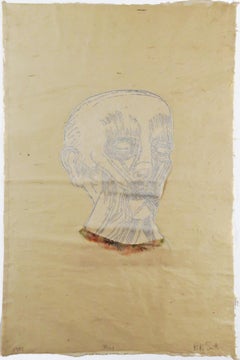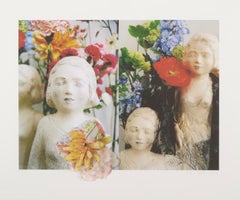Items Similar to Kiki Smith Offset Lithograph Photograph "My Secret Business" Photo Litho Print
Want more images or videos?
Request additional images or videos from the seller
1 of 13
Kiki SmithKiki Smith Offset Lithograph Photograph "My Secret Business" Photo Litho Print1993
1993
$4,500
£3,339.17
€3,889.68
CA$6,264.03
A$6,975.57
CHF 3,630.40
MX$86,007.88
NOK 46,235.87
SEK 43,457.24
DKK 29,021.84
Shipping
Retrieving quote...The 1stDibs Promise:
Authenticity Guarantee,
Money-Back Guarantee,
24-Hour Cancellation
About the Item
My Secret Business, 1992-1993
Duotone offset litho, Lithograph
Sheet measures 30.13'' x 22.5'' (76 X 56 cm). 23 1/2 × 18 in (59.7 × 45.7 cm) image.
Hand-signed by artist, Signed, dated and editioned "68/225" on recto
Publisher Brooklyn Academy of Music, (BAM) New York.
Kiki Smith (born January 18, 1954) is a West German-born American artist whose work has addressed the themes of sex, birth and regeneration. Her figurative work of the late 1980s and early 1990s confronted subjects such as AIDS and gender, while recent works have depicted the human condition in relationship to nature. Smith lives and works in the Lower East Side, New York City, and the Hudson Valley, New York State.
Smith's father was artist Tony Smith and her mother was actress and opera singer Jane Lawrence. Although Kiki's work takes a very different form than that of her parents, early exposure to her father's process of making geometric sculptures allowed her to experience formal craftsmanship firsthand. Her childhood experience in the Catholic Church, combined with a fascination for the human body, shaped her work conceptually.
Smith moved from Germany to South Orange, New Jersey, as an infant in 1955. She subsequently attended Columbia High School, but left to attended Changes, Inc. Later, she was enrolled at Hartford Art School in Connecticut for eighteen months from 1974–75. She then moved to New York City in 1976 and joined Collaborative Projects (Colab), an artist collective. The influence of this radical group's use of unconventional materials can be in seen in her work. For a short time in 1984, she studied to be an emergency medical technician and sculpted body parts, and by 1990, she began to craft human figures.
Prompted by her father's death in 1980 and by the AIDS death of her sister, the underground actress Beatrice “Bebe” Smith, in 1988, Smith began an ambitious investigation of mortality and the physicality of the human body. She has gone on to create works that explore a wide range of human organs; including sculptures of hearts, lungs, stomach, liver and spleen.
In 1984 Smith finished a definitively unfinished feminist no wave super 8 film, begun in 1981, entitled Cave Girls. It was co-directed by Ellen Cooper.
Smith has experimented with a wide range of printmaking processes. Some of her earliest print works were screen-printed dresses, scarves and shirts, often with images of body parts. She has worked in chromogenic color print photograph prints, lithograph, etching, porcelain, bronze, high-fired enamel on glass, watercolor painting, neon sculptures, silver gelatin photos etc. In association with Colab, Smith printed an array of posters in the early 1980s containing political statements or announcing Colab events. In 1988 she created "All Souls", a fifteen-foot screenprint work featuring repetitive images of a fetus, an image Smith found in a Japanese anatomy book. Smith printed the image in black ink on 36 attached sheets of handmade Thai paper.
MoMA and the Whitney Museum both have extensive collections of vintage Smith's prints. In the "Blue Prints" series, 1999, Kiki Smith experimented with the aquatint process. The "Virgin with Dove" was achieved with an airbrushed aquatint, an acid resist etching that protects the copper plate.
Mary Magdalene (1994), a sculpture made of silicon bronze and forged steel, is an example of Smith's non-traditional use of the female nude.
In 2005, Smith's installation, Homespun Tales won acclaim at the 51st Venice Biennale. Lodestar, Smith's 2010 installation at the Pace Gallery, was an exhibition of free-standing stained glass works painted with life-size figures.
After five years of development, Smith's first permanent outdoor sculpture was installed in 1998 on the campus of the University of California, San Diego.
In 2010, the Museum at Eldridge Street commissioned Smith and architect Deborah Gans to create a new monumental east window for the 1887 Eldridge Street Synagogue, a National Historic Landmark located on New York's Lower East Side. This permanent commission marked the final significant component of the Museum's 20-year restoration and was topped off with an exhibition of site-specific sculptures by Smith in a 2018 show entitled Below the Horizon: Kiki Smith at Eldridge.
For the Claire Tow Theater above the Vivian Beaumont Theater, Smith conceived Overture (2012), a little mobile made of cross-hatched planks and cast-bronze birds.
In 2019, Smith conceived Memory, a site specific installation for the DESTE Foundation for Contemporary Art on the Greek island of Hydra.
She has created unique artist books, including: Fountainhead (1991); The Vitreous Body (2001); and Untitled (Book of Hours) (1986).
Since the early 2010s Smith has created twelve 9 x 6 ft. Jacquard tapestries, published by Magnolia Editions. In 2012, Smith showed a series of three of these woven tapestry editions at the Neuberger Museum of Art. In early 2019, all twelve were exhibited together as part of "What I saw on the road" at the Palazzo Pitti in Florence, Italy.
Smith collaborated with poet Mei-mei Berssenbrugge to produce Endocrinology (1997), and Concordance (2006), and with author Lynne Tillman to create Madame Realism (1984). She has worked with poet Anne Waldman on If I Could Say This With My Body, Would I. I Would. Smith also collaborated on a performance featuring choreographer Douglas Dunn and Dancers, musicians Ha-Yang Kim, Daniel Carter, Ambrose Bye, and Devin Brahja Waldman, performed by and set to Anne Waldman's poem Jaguar Harmonics.
In 1980, Smith participated in the Colab organized exhibition The Times Square Show. In 1982, Smith received her first solo exhibition, "Life Wants to Live", at The Kitchen. Since then, her work has been exhibited in nearly 150 solo exhibitions at museums and galleries worldwide and has been featured in hundreds of significant group exhibitions, including the Whitney Biennial, New York (1991, 1993, 2002); La Biennale di Firenze, Florence, Italy (1996-1997; 1998); and the Venice Biennale (1993, 1999, 2005, 2009). She has been shown recently with Robert Longo, Cindy Sherman, Rashid Johnson, Shirin Neshat, Tony Oursler, Laurie Anderson, Eric Fischl, Dorothea Rockburne, and Ugo Rondinone. Past solo exhibitions have been held at the Montreal Museum of Fine Arts and the Modern Art Museum, Fort Worth (1996–97); Museum of Contemporary Art, Los Angeles (1996–97); Irish Museum of Modern Art, Dublin (1997–98); Hirshhorn Museum and Sculpture Garden, Washington, DC (1998); Carnegie Museum of Art, Pittsburgh (1998); Center for Curatorial Studies and Art in Contemporary Culture, Bard College, Annandale-on-Hudson (1999); St. Louis Art Museum (1999-2000); and the International Center for Photography (2001).
In 1996, Smith exhibited in a group show at SITE Santa Fe, along with Kara Walker.
In 2005, "the artist's first full-scale American museum survey" titled Kiki Smith: A Gathering, 1980-2005 debuted at the San Francisco Museum of Modern Art. Then an expansion came to the Walker Art Center in Minneapolis where the show originated. At the Walker, Smith co authored the catalogue raisonné with curator Siri Engberg.[29]
The exhibition traveled to the Contemporary Arts Museum Houston, to the Whitney Museum of American Art in New York,[30] and finally to La Colección Jumex in Ecatepec de Morelos outside Mexico City. In 2008, Smith gave Selections from Animal Skulls (1995) to the Walker in honor of Engberg.
Smith's many accolades also include the Nelson A. Rockefeller Award from Purchase College School of the Arts (2010), Women in the Arts Award from the Brooklyn Museum (2009), the 50th Edward MacDowell Medal (2009), the Medal Award from the School of the Museum of Fine Arts, Boston (2006), the Athena Award for Excellence in Printmaking from the Rhode Island School of Design (2006), the Skowhegan Medal for Sculpture from the Skowhegan School of Painting and Sculpture, Maine (2000), and Time Magazine’s “Time 100: The People Who Shape Our World” (2006). Smith was elected a member of the American Academy of Arts and Letters, New York, in 2005.
In 2012, she received the U.S. State Department Medal of Arts from Hillary Clinton. Pieces by Smith adorn consulates in Istanbul and Mumbai. After being chosen speaker for the annual Patsy R. and Raymond D. Nasher Lecture Series in Contemporary Sculpture and Criticism in 2013, Smith became the artist-in-residence for the University of North Texas Institute for the Advancement of the Arts in the 2013-14 academic year.
In 2016, Smith was awarded the International Sculpture Center Lifetime Achievement in Contemporary Sculpture Award.
- Creator:Kiki Smith (1954, American)
- Creation Year:1993
- Dimensions:Height: 30.13 in (76.54 cm)Width: 22.5 in (57.15 cm)
- Medium:
- Movement & Style:
- Period:
- Condition:this is being sold unframed.
- Gallery Location:Surfside, FL
- Reference Number:1stDibs: LU38215529232
Kiki Smith
Born in Germany in 1954, the daughter of minimalist sculptor Tony Smith, Kiki Smith was raised in the United States and has earned international status as one of the most significant artists of her time. She was chiefly influenced by Louise Bourgeois, Eva Hesse and Lee Bontecou. While she is best known for her often dissected, anatomical sculptures, she has also produced a body of innovative printed art. Some of the major themes that Smith explores in her printed works include physiology, self-portraiture, nature, and female iconography. While her work in both mediums share a common psychological quality, she advances beyond the strict biological emphasis in her sculpture by including images such as snowflakes and butterflies in her prints. Smith’s work has been featured at five Venice Biennales and she has had several major solo museum shows.Smith’s work is in several major museum collections, including the Museum of Modern Art, New York; Whitney Museum of American Art, New York; the Walker Art Center, Minneapolis; Solomon R. Guggenheim Museum, New York; The Metropolitan Museum of Art, New York; and the Museum of Contemporary Art, Los Angeles. She is a member of the American Academy of Arts and Letters and the American Academy of Arts and Sciences. In 2017, she was made an Honorary Royal Academician by the Royal Academy of Arts, London. In 2000 she was awarded the Skowhegan Medal for Sculpture and in 2009 the Edward MacDowell Medal. She also received the 2010 Nelson A. Rockefeller Award, Purchase College School of the Arts; the 2013 U.S. Department of State Medal of Arts, conferred by Hillary Clinton; and the 2016 Lifetime Achievement Award from the International Sculpture Center, to name just a few. Smith is an adjunct professor at NYU and Columbia University and lives and works in New York.
About the Seller
4.9
Platinum Seller
Premium sellers with a 4.7+ rating and 24-hour response times
Established in 1995
1stDibs seller since 2014
1,777 sales on 1stDibs
Typical response time: 1 hour
- ShippingRetrieving quote...Shipping from: Surfside, FL
- Return Policy
Authenticity Guarantee
In the unlikely event there’s an issue with an item’s authenticity, contact us within 1 year for a full refund. DetailsMoney-Back Guarantee
If your item is not as described, is damaged in transit, or does not arrive, contact us within 7 days for a full refund. Details24-Hour Cancellation
You have a 24-hour grace period in which to reconsider your purchase, with no questions asked.Vetted Professional Sellers
Our world-class sellers must adhere to strict standards for service and quality, maintaining the integrity of our listings.Price-Match Guarantee
If you find that a seller listed the same item for a lower price elsewhere, we’ll match it.Trusted Global Delivery
Our best-in-class carrier network provides specialized shipping options worldwide, including custom delivery.More From This Seller
View AllPhoto Lithograph Jannis Kounellis Arte Povera Italian Avant Garde Etching
By Jannis Kounellis
Located in Surfside, FL
'Lo faro il litterato tutta la vita'
Photo Lithography on rag paper
hand signed lower right in pencil: Kounellis
numbered 37/90.
Provenance: The Collection of Ileana Sonnabend (Mrs L...
Category
1960s Arte Povera Figurative Prints
Materials
Lithograph
Post Soviet Russian Avant Garde Art Photograph Mixed Media Gum Arabic Photo
By Igor Vishnyakov
Located in Surfside, FL
Igor Vishnyakov is a Russian Postwar & Contemporary artist who was born in 1968 in Moscow. Igor spent his childhood in Africa and Southeast Asia. After returning to Moscow in the mi...
Category
Early 2000s Nude Photography
Materials
Mixed Media, Photographic Paper
German Surrealist Hans Bellmer Etching Engraving Print Cecile Reims Surrealism
By Hans Bellmer
Located in Surfside, FL
After Hans Bellmer (German, 1902-1975)
Surrealist engraving, etching
after drawings from a 1942 notebook,
engraved in 1974-75 by Cecile Reims
Printed by L'Atelier de Chalcographie du Louvre, Paris,
Having printed monogram lower left in plate, pencil notations and #7/10 and 'Musee du Louvre' blindstamp verso
Dimensions: Sheet 11 X 7.5, Plate size 6.5 X 4
Hans Bellmer ( 1902 – 1975) was a Polish born German artist, best known for his drawings, etchings that illustrates the 1940 edition of Histoire de l’œil, and the life-sized female sculpture mannequin dolls he produced in the mid-1930s. Historians of art and photography also consider him a Surrealist photographer.
Bellmer was born in the city of Kattowitz, then part of the German Empire (now Katowice, Poland). Up until 1926, he worked as a draftsman for his own advertising company.
Bellmer is most famous for the creation of a series of dolls as well as photographs of them. He was influenced in his choice of art form in part by reading the published letters of Oskar Kokoschka (Der Fetisch, 1925) and Surrealism. Bellmer's puppet doll project is also said to have been catalysed by a series of events in his personal life.
Hans Bellmer takes credit for provoking a physical crisis in his father and brings his own artistic creativity into association with childhood insubordination and resentment toward a severe and humorless paternal authority. Perhaps this is one reason for the nearly universal, unquestioning acceptance in the literature of Bellmer's promotion of his art as a struggle against his father, the police, and ultimately, fascism and the state. Events of his personal life also including meeting a beautiful teenage cousin in 1932 (and perhaps other unattainable beauties), attending a performance of Jacques Offenbach's Tales of Hoffmann (in which a man falls tragically in love with an automaton), and receiving a box of his old toys. After these events, he began to actually construct his first dolls. In his works, Bellmer explicitly sexualized the doll as a young girl (his work bears connection to the works of Bathus). Hirschfeld has claimed (without further argumentation) that Bellmer initiated his doll project to oppose the fascism of the Nazi Party by declaring that he would make no work that would support the new German state. Represented by mutated forms and unconventional poses, his dolls (according to this view) were directed specifically at the cult of the perfect body then prominent in Germany.
He visited Paris in 1935 and made contacts there, such as Paul Éluard, but returned to Berlin because his wife Margarete was dying of tuberculosis. He was part of the circle of Surrealist luminaries such as Man Ray, Marcel Duchamp, Max Ernst, Joan Miro, André Masson, René Magritte, Alberto Giacometti and Salvador Dali as well as women artists—such as Frida Kahlo, Dorothea Tanning and Leonora Carrington.
Bellmer produced the first doll in Berlin in 1933. Long since lost, the assemblage can nevertheless be correctly described thanks to approximately two dozen photographs Bellmer took at the time of its construction. Standing about fifty-six inches tall, the doll consisted of a modeled torso made of flax fiber, glue, and plaster; a mask-like head of the same material with glass eyes and a long, unkempt wig; and a pair of legs made from broomsticks or dowel rods. One of these legs terminated in a wooden, club-like foot; the other was encased in a more naturalistic plaster shell, jointed at the knee and ankle. As the project progressed, Bellmer made a second set of hollow plaster legs, with wooden ball joints for the doll's hips and knees. There were no arms to the first sculpture, but Bellmer did fashion or find a single wooden hand, which appears among the assortment of doll parts the artist documented in an untitled photograph of 1934, as well as in several photographs of later work.
Bellmer's 1934 anonymous book, The Doll (Die Puppe), produced and published privately in Germany, contains 10 black-and-white photographs of Bellmer's first doll arranged in a series of "tableaux vivants" (living pictures). The book was not credited to him, as he worked in isolation, and his photographs remained almost unknown in Germany. Yet Bellmer's work was eventually declared "degenerate" (entartete kunst) by the Nazi Party, and he was forced to flee Germany to France in 1938, where Bellmer's work was welcomed by the Surrealists around Andre Breton.
He aided the French Resistance during the war by making fake passports. He was imprisoned in the Camp des Milles prison at Aix-en-Provence, a brickworks camp for German nationals, from September 1939 until the end of the Phoney War in May 1940.
After the war, Bellmer lived the rest of his life in Paris. Bellmer gave up doll-making and spent the following decades creating erotic drawings, etchings, sexually explicit photographs, paintings, and prints of pubescent girls. In 1954, he met Unica Zürn...
Category
20th Century Abstract Prints
Materials
Etching
David Salle Photogravure Heliogravure "Lucky" Pictures Generation Signed Print
By David Salle
Located in Surfside, FL
DAVID SALLE (American, 1952- )
Lucky
1992
Photoengraving heliogravure on Lana paper
Edition Julie Sylvester, New York
Hand signed and dated in pencil lower right, numbered lower left...
Category
1990s Contemporary Abstract Prints
Materials
Photogravure
German Surrealist Hans Bellmer Etching Engraving Print Cecile Reims Surrealism
By Hans Bellmer
Located in Surfside, FL
After Hans Bellmer (German, 1902-1975)
Surrealist engraving, etching
after drawings from a 1942 notebook,
engraved in 1974-75 by Cecile Reims
Printed by L'Atelier de Chalcographie du Louvre, Paris,
Having printed monogram lower left in plate, pencil notations verso Editioned from a very small edition of #7/10 and 'Musee du Louvre' blindstamp.
Dimensions: Sheet 11 X 7.5, Plate size 6.5 X 4
Hans Bellmer ( 1902 – 1975) was a Polish born German artist, best known for his drawings, etchings that illustrates the 1940 edition of Histoire de l’œil, and the life-sized female sculpture mannequin dolls he produced in the mid-1930s. Historians of art and photography also consider him a Surrealist photographer.
Bellmer was born in the city of Kattowitz, then part of the German Empire (now Katowice, Poland). Up until 1926, he worked as a draftsman for his own advertising company.
Bellmer is most famous for the creation of a series of dolls as well as photographs of them. He was influenced in his choice of art form in part by reading the published letters of Oskar Kokoschka (Der Fetisch, 1925) and Surrealism. Bellmer's puppet doll project is also said to have been catalysed by a series of events in his personal life.
Hans Bellmer takes credit for provoking a physical crisis in his father and brings his own artistic creativity into association with childhood insubordination and resentment toward a severe and humorless paternal authority. Perhaps this is one reason for the nearly universal, unquestioning acceptance in the literature of Bellmer's promotion of his art as a struggle against his father, the police, and ultimately, fascism and the state. Events of his personal life also including meeting a beautiful teenage cousin in 1932 (and perhaps other unattainable beauties), attending a performance of Jacques Offenbach's Tales of Hoffmann (in which a man falls tragically in love with an automaton), and receiving a box of his old toys. After these events, he began to actually construct his first dolls. In his works, Bellmer explicitly sexualized the doll as a young girl (his work bears connection to the works of Bathus). Hirschfeld has claimed (without further argumentation) that Bellmer initiated his doll project to oppose the fascism of the Nazi Party by declaring that he would make no work that would support the new German state. Represented by mutated forms and unconventional poses, his dolls (according to this view) were directed specifically at the cult of the perfect body then prominent in Germany.
He visited Paris in 1935 and made contacts there, such as Paul Éluard, but returned to Berlin because his wife Margarete was dying of tuberculosis. He was part of the circle of Surrealist luminaries such as Man Ray, Marcel Duchamp, Max Ernst, Joan Miro, André Masson, René Magritte, Alberto Giacometti and Salvador Dali as well as women artists—such as Frida Kahlo, Dorothea Tanning and Leonora Carrington.
Bellmer produced the first doll in Berlin in 1933. Long since lost, the assemblage can nevertheless be correctly described thanks to approximately two dozen photographs Bellmer took at the time of its construction. Standing about fifty-six inches tall, the doll consisted of a modeled torso made of flax fiber, glue, and plaster; a mask-like head of the same material with glass eyes and a long, unkempt wig; and a pair of legs made from broomsticks or dowel rods. One of these legs terminated in a wooden, club-like foot; the other was encased in a more naturalistic plaster shell, jointed at the knee and ankle. As the project progressed, Bellmer made a second set of hollow plaster legs, with wooden ball joints for the doll's hips and knees. There were no arms to the first sculpture, but Bellmer did fashion or find a single wooden hand, which appears among the assortment of doll parts the artist documented in an untitled photograph of 1934, as well as in several photographs of later work.
Bellmer's 1934 anonymous book, The Doll (Die Puppe), produced and published privately in Germany, contains 10 black-and-white photographs of Bellmer's first doll arranged in a series of "tableaux vivants" (living pictures). The book was not credited to him, as he worked in isolation, and his photographs remained almost unknown in Germany. Yet Bellmer's work was eventually declared "degenerate" (entartete kunst) by the Nazi Party, and he was forced to flee Germany to France in 1938, where Bellmer's work was welcomed by the Surrealists around Andre Breton.
He aided the French Resistance during the war by making fake passports. He was imprisoned in the Camp des Milles prison at Aix-en-Provence, a brickworks camp for German nationals, from September 1939 until the end of the Phoney War in May 1940.
After the war, Bellmer lived the rest of his life in Paris. Bellmer gave up doll-making and spent the following decades creating erotic drawings, etchings, sexually explicit photographs, paintings, and prints of pubescent girls. In 1954, he met Unica Zürn...
Category
20th Century Abstract Prints
Materials
Etching
Erotic Nude French Surrealist Aquatint Etching Photo Collage Silkscreen Print
By Zvi Milshtein
Located in Surfside, FL
This is numbered by hand in pencil and signed in pencil. An erotic nude etching.
Zwy Milshtein (Zvi Tzvi Milstein) BIOGRAPHY 1934 Born in Kishinev (Bessarabia) Russian, Romanian reg...
Category
20th Century Expressionist Portrait Prints
Materials
Etching, Aquatint
You May Also Like
Kiki Smith, Tattoo Print, silkscreen and ink transfer on wove paper, S/N, Framed
By Kiki Smith
Located in New York, NY
Kiki Smith
Tattoo Print, 1995
Silkscreen and ink transfer on wove paper
Signed, dated 1995 and numbered 96/100 in graphite pencil on the front
Another example of this edition is in t...
Category
1990s Contemporary Animal Prints
Materials
Ink, Screen
Virgin Mary Poster
By Kiki Smith
Located in New York, NY
Screenprint on handmade Napalese paper. Edition of 3000. Printed by Universität für angewandte Kunst, Vienna. Published by MAK Galerie, Österreichisches Museum für angewandte Kunst, ...
Category
1990s Contemporary Abstract Prints
Materials
Handmade Paper, Screen
Untitled
By Kiki Smith
Located in New York, NY
Kiki Smith
'Untitled,' 1995
Woodcut with color additions by hand
31 x 21 inches
Edition 43 of 47
Signed
In 1995 five well-known American artists - Donald Baechler, Julian Lethbridge...
Category
1990s Abstract Prints
Materials
Woodcut
$4,000
Miss May
By Kiki Smith
Located in New York, NY
Created by Kiki Smith in 2007, Miss May is a mixed media print with collage on paper. Measuring 20 1/8 in. x 24 1/4 in. (51.12 cm x 61.6 cm), unframed, the artwork is signed in penci...
Category
21st Century and Contemporary Contemporary Mixed Media
Materials
Mixed Media
$1,800
Worm
By Kiki Smith
Located in Toronto, Ontario
Kiki Smith (b. 1954) is a celebrated American artist renowned for her multidisciplinary exploration of the human body and themes of existentialism, transformation, and the natural wo...
Category
1990s Contemporary Mixed Media
Materials
Etching, Aquatint, Photogravure
$7,000
Kiki Smith Collage/Lithograph "squirrel" Flying Creatures Signed Dated
By Kiki Smith
Located in Detroit, MI
A collage lithograph from her series Various Flying Creatures by Kiki Smith titled: "squirrel." Smith has used one of her animal/insect iconic figur...
Category
1990s American Modern More Prints
Materials
Paper, Lithograph
More Ways To Browse
Vintage Greek Photos
Irish Arts And Crafts
1980 Printed Shirt
Vintage Road Signs
Garden Dove
Top Vintage Shirts
Vintage Greek Dress
Vintage Neon Sculpture
1887 Porcelain
Glass Bird Sculpture Signed
Bird Stained Glass
Mexican Stained Glass
Hatcher Collection
Hand Forged Screen
Vintage Bird Dress
Bird Sculpture Plated
Thailand Dress
Vintage Kitchen Posters

